
Books to Help You Think
Like a Visual Artist
Myla Goldberg on Getting Inside the Mind of a Painter or Photographer
One of the great things about writing (and reading) is that it allows me to briefly become someone who, in real life, I will never be. I’m not a painter or a photographer, but I am fascinated by those people because they have a superpower that will forever lie beyond my reach. A painting or photograph can instantly accomplish what, for a writer, requires whole squadrons of words on a page to do. The author’s meaning is encoded in a series of symbols the brain must first decipher, but a masterful image has an immediate effect, like an adrenaline shot to the heart.
Books about painters and photographers take us inside their minds, offering access to a different way of seeing and thinking. The best of these provide more than a temporary shift, forever altering the way we see and think about the world. Here’s a list of stories about artists and photographers that rewired my own brain and let me, however briefly, become a person with image power.
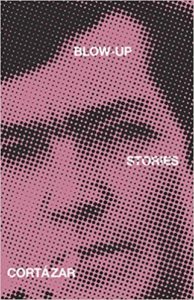 Julio Cortazar, Blow-Up: And Other Stories
Julio Cortazar, Blow-Up: And Other Stories
Cortazar changed the title of this short story after Antonioni adapted it for his famous movie, which (surprise) bears very little resemblance to what Cortazar wrote. Reading it puts you inside the mind of a photographer—finely attuned to the details of his camera, his environment, and his craft—who has captured something unsettling on film and grapples with what he’s discovered. Spoiler alert: the discovery in the story is more interesting and subtle than the one in the film version, though both versions address an issue of consent once relegated to street photography, which is now relevant to anyone with a cellphone: When is it okay to take someone’s picture?
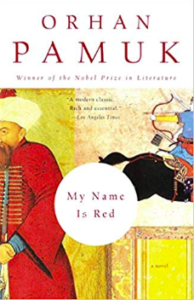 Orhan Pamuk, My Name is Red
Orhan Pamuk, My Name is Red
Or, Everything You Every Wanted to Know About 15th-Century Ottoman Miniaturist Painting But Were Afraid To Ask, all wrapped up in a murder mystery that lets you be everyone from the murdered corpse to the murderer to, yes, the color red itself. Pamuk’s shifting perspectives illuminate life inside the Sultan’s Royal Workshop at a time when centuries of Eastern idealized painting traditions are beginning to be challenged by Western notions of individual portraiture. By inhabiting the minds and hands of painters trained over the course of a lifetime to evoke the beauty of the world in a series of perfect, tiny brushstrokes, Pamuk allows you to see their art their way.
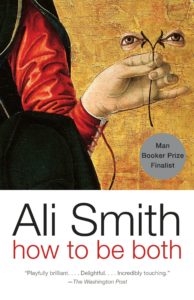 Ali Smith, How to Be Both
Ali Smith, How to Be Both
Like Pamuk, Ali Smith is one of those rare writers who combines literary experimentation with heart. There are two versions of this book, and whichever one you happen to read will shape which one of the book’s two main characters you first ally with. Will you be dropped into the 15th century with a Renaissance painter? Or will you start out in our own century with a daughter mourning the recent death of her artist mother, who was deeply influenced by the work of the Renaissance painter? Either way, the process of making and perceiving art is brought to vibrant, original life in this book, which allows you to be both artist and audience in turn.
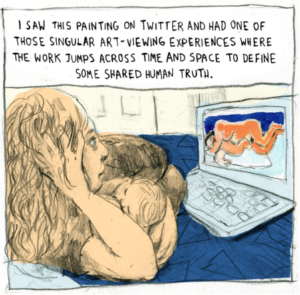 Lauren Weinstein, “Being an Artist and a Mother”
Lauren Weinstein, “Being an Artist and a Mother”
Wait, you might say when you look at this one, it’s a webcomic: isn’t that cheating? No, because it’s a comic about a painting and the way that painting affects Weinstein’s views of art and motherhood. But it also proves my earlier point about the superpower of the image, because in twenty-four witty, intelligent, insightful panels Weinstein explores the fraught relationship between ambition and motherhood with an economy that mere prose can only gawp at.
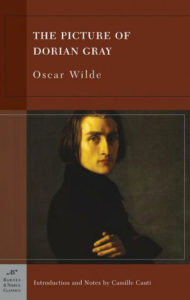 Oscar Wilde, The Picture of Dorian Gray
Oscar Wilde, The Picture of Dorian Gray
The portrait at the center of this story is what usually grabs people’s attention, but while the book is developing its super-famous conceit, it’s also exploring the roots of artistic inspiration and the fraught power relationship between painter and muse as embodied by Basil Hallward, the painter in thrall to Dorian’s toxic charms. To what degree is the fullest realization of artistic genius dependent upon random factors, like who one happens to meet at a dinner party? Wilde uses Dorian’s story to address questions central to artistic identity. Once you read the book, check out the portrait Ivan Albright painted for the 1945 film adaptation.
Myla Goldberg
Myla Goldberg is the bestselling author of Feast Your Eyes, The False Friend, Wickett’s Remedy, and Bee Season, which was a New York Times Notable Book, winner of the Borders New Voices Prize, and a finalist for the Hemingway Foundation/PEN award, the NYPL Young Lions award, and the Barnes & Noble Discover award. It was adapted to film and widely translated. In addition to her novels, she has written an essay collection, a children’s book, and short stories that have appeared in Harper’s.



















